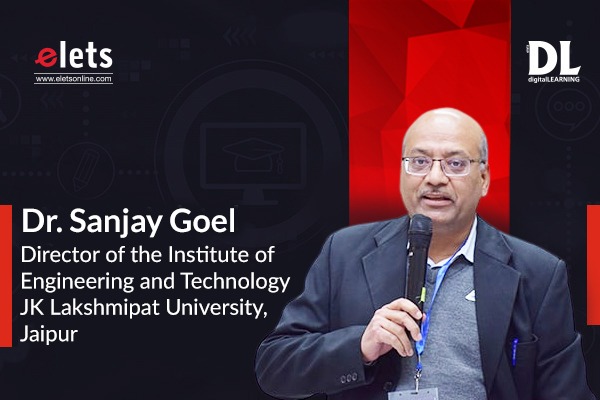
The electrical engineering community has been at the forefront of experimenting, using,
and developing AI technologies to improve electrical components, equipment,
machines, and systems. AI is used to improve their design, performance & optimization,
adaptive & fault-tolerant control, fault detection & diagnosis, condition monitoring & predictive maintenance, reliability, and cyber security. As early as the 1960s, expert systems were developed for power system scheduling, machine analysis & design, power electronics systems, etc. In 1990, the IEEE Control Systems Magazine published a special issue on “Neural Networks in Control Systems.”
According to Google Scholar, over 10.7 lakh, 6.6 lakh, and 6.5 lakh electrical
engineering-related papers, reports, and patents include the words ‘artificial
intelligence,’ ‘neural network,’ and & ‘machine learning,’ respectively. AI infusion in
electrical engineering is growing rapidly. For example, the market for AI in the energy
sector is expected to increase five-fold by 2030 and the market for smart lighting and
control system is likely to double within the next five years.
AI predicts and manages electricity demand and supply, optimizes power plant
operation, detect faults, and predicts power system behavior. It also helps to predict
renewable energy generation and manage smart grids that monitor and control
electricity flow, manage energy storage, and prevent failures and cyber-attacks. AI is
helping in demand-side management by adjusting appliance usage in response to price
or supply changes, reducing peak demand. It can help to optimise building energy
consumption by learning occupants’ behavior and adjusting energy usage accordingly. It
can be used to optimise the operation of electric vehicles and charging stations.
Chatbots can help power utilities in customer interaction. Natural Language Processing
(NLP) can be used to analyse maintenance and injury reports for improving
maintenance and operations. Computer vision can automatically detect violations of
safety and other work protocols. Power utilities use intelligent robots and drones for
inspecting, cleaning, and maintaining high-risk, time-consuming, and difficult-to-access
assets. The global market for robotics in the renewable energy sector alone is expected
to reach 11.6 billion USD by 2025. AI along with advanced communication networks,
phasor measurement units, and sensors can implement the self-healing capabilities of
the smart grid. Development of intelligent digital twins, virtual replicas of physical
machines and systems, is increasing for monitoring, analysing and optimising physical
assets’ performance and energy consumption, predicting and preventing failures, and
improving reliability, efficiency, and safety, while also reducing costs and environmental
impacts.
Interdisciplinary education for preparing Electrical AI Engineers
The challenges of Industry 4.0 and Circular and NetZero economies call for
interdisciplinary engineering solutions. Industry 4.0 involves integrating physical,
biological, and digital worlds to create new technologies and systems, while the goals of
Circular and NetZero economies require increased environmental focus through policies
like green credits and renewable energy certificates. AI, a worthy daughter of electrical engineering, is being integrated with contemporary computing and electrical
technologies to ensure an uninterrupted, high-quality electricity supply, increase energy
efficiency, and mitigate negative environmental impacts of electricity generation,
distribution, and consumption.
An Electrical AI Engineer combines knowledge of electrical engineering and AI to
develop intelligent systems to support the planning, design, manufacturing, operation,
and maintenance of electrical components, systems, and infrastructure. Either electrical
engineering or ‘computer science and engineering’ graduates can pursue these roles. It
requires the electrical engineering curriculum to also include some relevant computing
topics like digital instrumentation and control systems, embedded systems, IoT,
robotics, M2M communication, computational methods for electric engineering, smart
grid, etc., along with generic computing and AI. At the same time, the CSE or AI
programs should also include a few topics related to physical engineering disciplines,
e.g., electric and mechanical workshop, machines, sensors, instrumentation and control,
and also some in related computing, e.g., embedded systems, IoT, robotics,
computational engineering analysis, CAD, simulation, etc.
Also Read:- AI Beyond Chatbots: Revolutionising Civil Engineering
In order to groom engineers for successful careers in the Industry 4.0 era, the
engineering curriculum should offer a multidisciplinary education including their core
engineering discipline with a balanced exposure to other engineering fields, computing
technologies, and non-engineering subjects. The ‘computer science and engineering’
programs too must supplement ‘computer science’ courses with physical engineering-
related courses. Further, the creation of active-learning-based interdisciplinary
educational engagements is even more crucial. This requires an overall transformation
of engineering education and the dismantling of silos between physical engineering and
computing and fostering of inter-disciplinary team teaching by multiple departments.
Views expressed by Dr. Sanjay Goel, Director Institute of Engineering & Technology, JK Lakshmipat University, Jaipur






















